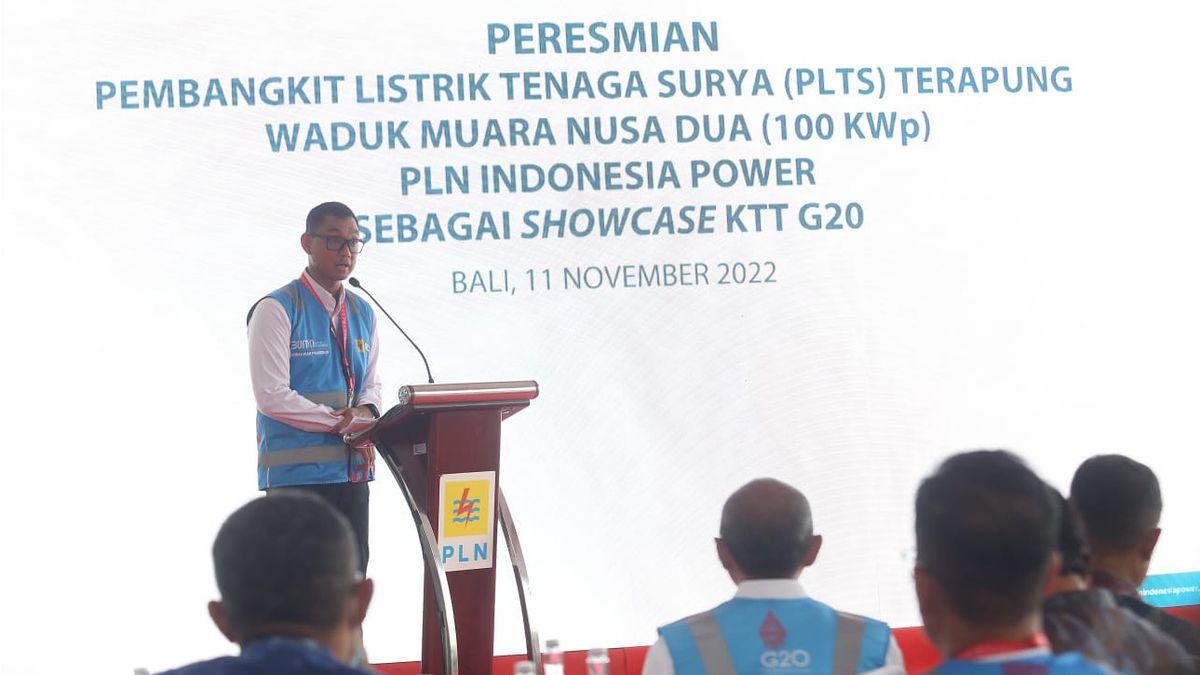Coordinating Minister for Maritime Affairs and Investment, Luhut Binsar Pandjaitan, visited the inauguration of a floating solar power plant (PLTS) in the Muara Tukad Reservoir area, Bali, on Friday, November 11.
This floating PLTS with a capacity of 100 kilowatt peak (kWp) is expected to be one of the foundations in an effort to achieve Indonesia's net zero emissions (NZE) target by 2060. Luhut said the electricity produced from this floating PLTS would be absorbed by PLN.
"We have witnessed the construction of the first floating PLTS in Indonesia with electricity absorbed by PLN. So, I ask this PLTS not to be seen only 100 kWp, this is one of our commitments to the world and we will make it a showcase at the G20 later," said Luhut in Nusa Dua, Bali.
With a capital of 5,087 lakes and 300 dams, Indonesia is believed to be able to produce large amounts of solar seterum. Luhut added, currently the government has also gradually implemented the installation of solar panels with a coverage of 5 percent of the total lake or dam area.
"We have great potential for solar panels, we can install 5 percent of the lake area. We can imagine how many," said Luhut.
In order to meet demand and ensure the availability of materials in Indonesia, the government will soon build a solar panel production plant in the North Kalimantan Industrial Estate.
"So, (Indonesia) will no longer need to import materials. Now it's 50 percent, I think for the next three to four years, Indonesia has that," he said.
Even so, Luhut admitted that PLTS is an intermittent power plant that needs to be supported by base load plants, such as geothermal power plants (PLTP) or hydroelectric power plants (PLTA).
"Indonesia has 437 GW of renewable energy potential and we have only managed 5 percent, we still have a lot of room to grow," said Luhut.
In addition to reducing carbon emissions from the production process at the plant, the government has also carried out a mangrove restoration of 600 thousand hectares within four years.
This step is expected to absorb and suppress carbon emissions that float in the air. "Until this year, 170 hectares and we will accelerate this to be completed in 2024," he said.
For your information, the floating PLTS Muara Tukad is one of three new and renewable energy-based power plants (EBT) in Bali, which is ready to be shown to all foreign delegates who are present at the G20 Summit in Bali, on November 15-16.
Two other EBT plants, namely roof PLTS in 33 buildings spread across Bali and hybrid PLTS in Nusa Penida, Klungkung.
The energy transition is one of the central issues discussed by the leaders when meeting at The Apurva Kempinski, Nusa Dua, Bali, next week. The issue was included in the first session of discussion with the theme of food and energy security.
The English, Chinese, Japanese, Arabic, and French versions are automatically generated by the AI. So there may still be inaccuracies in translating, please always see Indonesian as our main language. (system supported by DigitalSiber.id)
Most Popular Tags
#NCP #Presidential Threshold #Hasto Kristiyanto #squid game 2Popular
06 Januari 2025, 23:05
06 Januari 2025, 22:37
06 Januari 2025, 23:25













